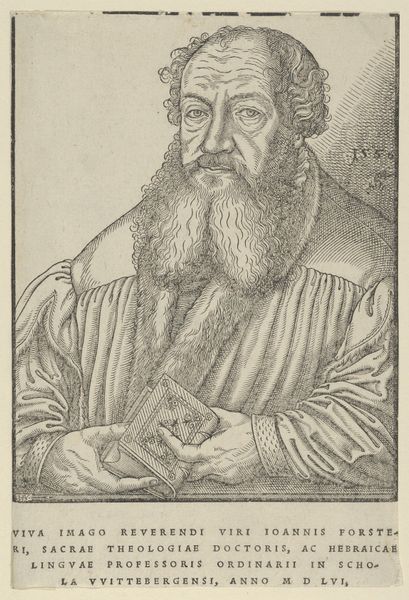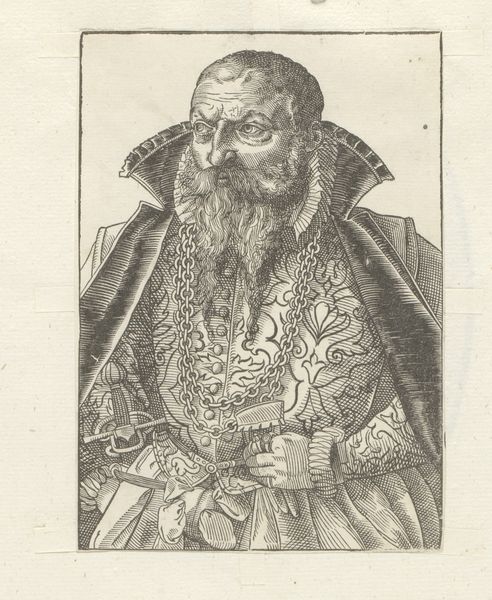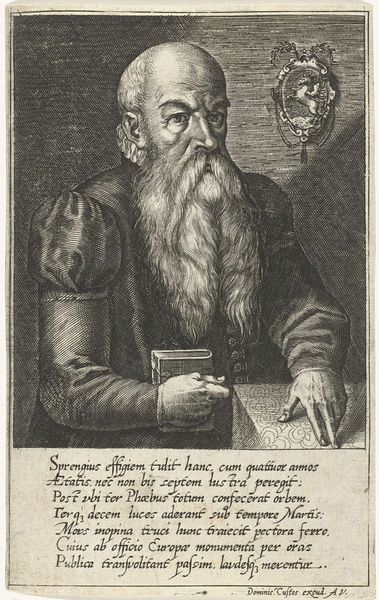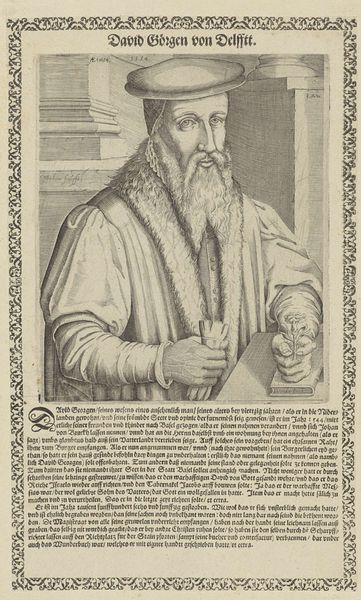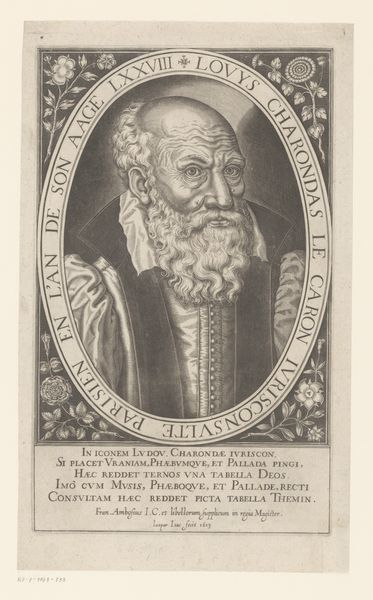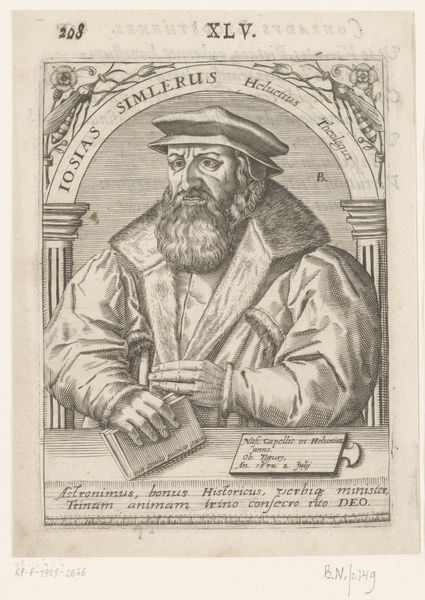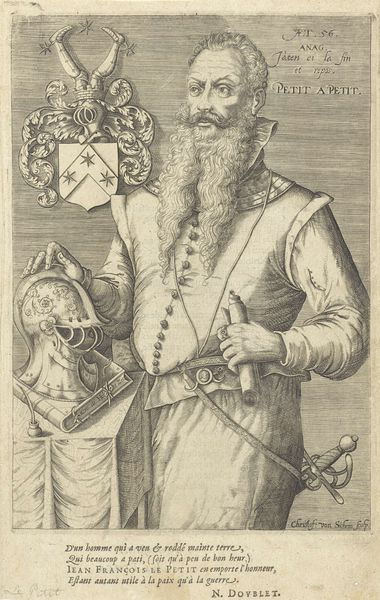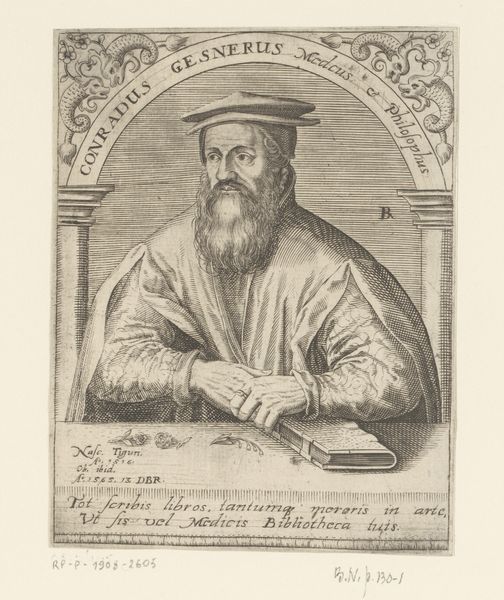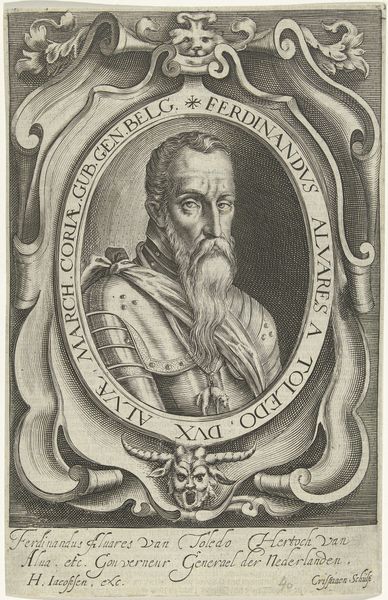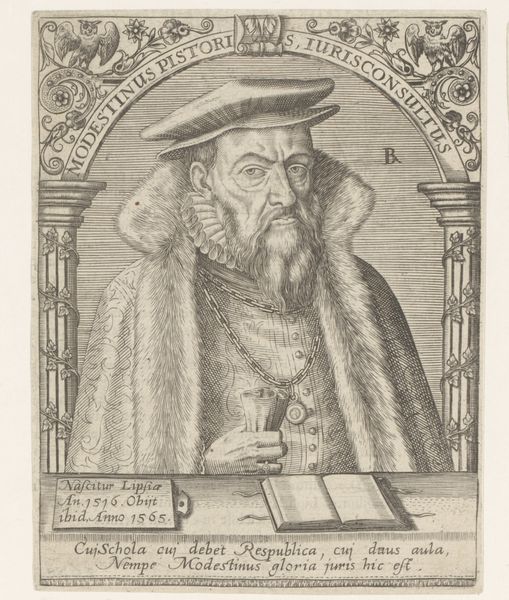
print, engraving
#
portrait
# print
#
pen sketch
#
pencil sketch
#
old engraving style
#
figuration
#
pen-ink sketch
#
history-painting
#
italian-renaissance
#
engraving
Dimensions: height 137 mm, width 109 mm
Copyright: Rijks Museum: Open Domain
Curator: Let’s turn our attention to this engraving, “Portret van Antonio Albizzi,” dating back to 1616. It's currently held at the Rijksmuseum. Editor: Right off, I get a very stern, scholarly vibe from this. There's such a sharp intensity in his gaze and the tightly held scroll. It almost feels like a pronouncement. Curator: What strikes me immediately is the incredible detail achieved through the printmaking process. Look at the lines that define the face and beard of Antonio Albizzi, the textures in his garment. We can really appreciate the craft involved here. It’s a reproduction but it has a richness all its own. Editor: And that medallion…it adds another layer of complexity to his character. Does it denote nobility or affiliation? It almost clashes with the somber mood, hinting at something beyond mere scholarship. It’s like a secret. Curator: Indeed. These sorts of details were incredibly important. This print operates in a very specific social sphere—likely designed for distribution to friends, family, and fellow scholars, thus communicating Albizzi's status and legacy to the wider world. And also consider the economics, what did the materials cost to create a reproduction for many, what did the engraver get paid and the cost of his apprenticeship, also consider paper costs from that period as well... Editor: True. And, for me, as an artist, it's intriguing how much personality can be imbued using such a constrained medium. The lines almost become their own language. Do you ever wonder what Antonio himself would think seeing his portrait distributed so widely, beyond the halls of the powerful? Curator: He likely would've approved. These were calculated exercises in reputation management and commemorative culture. It reminds us that what we see here isn't just an image, but a consciously crafted artefact circulating within very specific historical and social networks. Editor: It leaves me contemplating what endures. This man and the very precise marks, committed so meticulously—both leave behind something. Perhaps words will abide indeed, as it reads at the bottom: "Verba Dei stabunt, nullum peritura per aeuum." Curator: Absolutely, a testament to enduring craftsmanship and the layered meanings embedded in what might first appear a simple portrait. It goes well beyond the initial impressions.
Comments
No comments
Be the first to comment and join the conversation on the ultimate creative platform.
